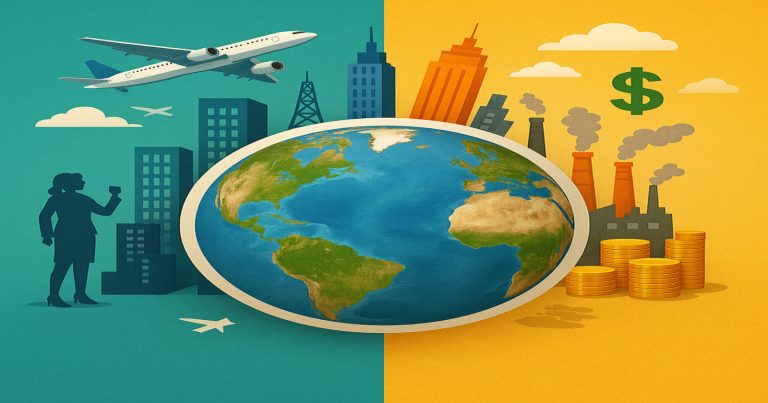Developmental processes in all nations are open to liberalism. The government always intends to provide a suitable environment for interested members. These efforts aim primarily to discover more global trading chains. This will bear the spiritual planning of eventual inclusivity. Liberal action could also give birth to foreign direct investment. It is directed to deforesting activities by conjoining technology. Especially from builders attracted anywhere into opportunities set by the Ministry’s new Industrial Strategies, fieldwork, and the resulting new potential items.
What is Liberalisation?
Liberalization occurs when government restrictions on the functioning of businesses become fewer. Or, ultimately, none at all, for the most part, about market transactions. It lowers tariffs. Thus, disbanding regulatory rules of trade. In general, encouraging private and foreign investments. Liberalization is meant to provide efficient economies . It competes globally and respond to supply-demand dynamics. It’s the major shift from protectionism to opening borders. By private enterprises as the active leading role.
What Makes Countries Liberalize?
Countries have been liberalizing to promote growth, efficiency in their economies. Also integration into networks for trading with the rest of the world. Now, especially with liberalization during the crisis, liberalization has been seen as a recovery and sustainability tool. Innovation is fostered by government support. But, that helps create job opportunities that are now competitive in business settings. Some more resources will help improve reserves in foreign exchange . It will strengthen the financial sector.
Liberalization vs Deregulation
Though the two are used interchangeably. The difference comes from the fact that liberalization is about reducing government interference in the free market mechanism. Deregulation, on the other hand, concerns the removal of or simplification of rules in sector-specific areas, such as telecommunications or finance. The scope of liberalization is broader, covering trade, investment, industry, and financial reforms. Deregulation is merely a tool generally applied within a liberalization strategy.
Economic Liberalisation for Developing Countries
It could transform countries, especially developing ones, to access international capital markets, boost their local domestic industries, and potentially create millions of jobs. It could, however, increase inequality without safety nets in tandem with public regulation. Using examples like India, Brazil, and Indonesia, the effects countries would have with liberalization differ with their kind of constructs.
An Example of Cases India’s Liberalisation in 1991
Economic crises underwent by India during 1991 forced the central government towards liberalization reforms. Some measures involve lifting industrial licensing, allowing foreign direct investments (FDIs) into various sectors, and reducing tariffs. Such reforms would also change the Indian economy in terms of rapid GDP growth and development in IT sectors, as well as a surge in foreign investments. New concerns about income disparity and environmental issues arose post-reforms.
Impacts of Liberalisation on the Economy and Society
Liberalization has drastically impacted global economies by generating growth, innovations, and efficiencies. It has, however, its share of challenges, such as income inequality and environmental degradation. The positive and negative effects of liberalization thus influence the kind of national policies and social outcomes.

Positive Effects of Liberalisation
Among many advantages that liberalism has installed to bring with it the fast emergence of economic growth, international trade, and foreign investment, it keeps the private sector active under competition, thus encouraging innovation and employment. Because of liberalization, consumers can avail themselves of efficient prices, wider choices, and better-quality commodities. Infrastructure development and growth in this service sector also yield common outcomes.
An Increase in Foreign Direct Investment (FDI)
Liberalization attracts more foreign investment because there are fewer restrictions and weaker evidence of complex doing business. These include technology transfer, employment creation, and capital flow revenues stimulating the economy through FDI. Such investments usually come with international expertise and management practices. Thus, domestic firms ensure that they become more competitive and also export-oriented.
Improvement in Business Efficiency
Survival in the world market drives firms to be more efficient because of liberalization. New technologies are adopted, operations costs are reduced, and productivity is improved. This, in turn, has a knock-on effect on the economy in most cases that see improvement in GDP and income levels. It also creates a culture of innovation and entrepreneurship, even if it is not tech-centric.
The Objectives of Liberalisation
The central aim of liberalization is to increase productivity and competition through deregulation and open markets. In addition, it tends to attract foreign investment, making better use of available resources and reducing overall public sector dominance while providing a greater connectedness to the global economy.
Accelerating Economic Growth and Development
Liberation is primarily poised at economic growth by letting the market forces free. By removing barriers such as trade barriers and heavy regulations, the environment becomes conducive to investments. Often, such growth translates into higher GDP, infrastructure, and quality of life. Economic development, however, has now become far more dynamic and innovation-based.
Boosting International Trade and Investments
In addition to reducing tariffs and simplifying the investment process, liberalization enables countries to develop international partnerships. This alters the pattern of trade for the countries and gives them entrance into new markets. Export-led growth possibilities have become realistic, especially for most developing nations. Foreign capital inflow will also improve the balance of payments and the foreign exchange reserves.
Optimum Allocation of Resources
Liberalization leads to the movement of resources such as labor and capital into those sectors where they could be used most productively. This minimizes inefficiencies and creates an increment in output over the economy. Unlike most centrally-planned countries, liberalized economies react effectively to supply and demand. This makes better use of national resources and skills.
Motivating Private Sector Participation
In terms of reducing the dominance of the public sector, liberalization creates an arena for the private sector wherein it will innovate and compete. As businesses expand and thrive, they also provide job opportunities and supply goods and services that meet consumer preferences better. It also alleviates the fiscal burden on governments; the latter may focus more on significant areas such as health and education.
Consolidation of a Market Economy
Under liberalization, the price mechanism determines goods and services production, distribution, and consumption. Most government interventions would be minimized or eliminated; supply-demand forces would be freely exercised. This creates an environment where competition thrives, and companies must improve perpetually to survive.
Major Reforms Introduced During Liberalisation
Reforms cover trade, industry, finance, taxation, and foreign direct investment policies. These changes aimed to lessen bureaucratic control and create a competitive environment. Such reforms built the foundation of sustained growth and development of the private sector.
Trade Policy Reforms
Liberalization all began with the opening of trade rights, which, in turn, created barriers such as tariffs, quotas, and licensing. This complements export growth, provides consumers with greater choice, and improves access to international markets through imports. The countries can now import capital goods and technologies they previously restricted. In the long run, this improved productivity and global integration.
Industrial Policy Reforms
Industries were often heavily controlled and state-interfered before the liberalization. In this light, license raj, fostering small and medium enterprises, and privatizing public enterprises were among the reforms. This lured domestic and foreign entrepreneurs with funds and innovation and encouraged diversity in the Indian economy.
Changes in Financial Sector Reforms
Liberalizing the Financial Sector means deregulating interest rates and embracing private and foreign bank participation while strengthening the regulatory institutions. The reforms brought liquidity and inculcated a savings atmosphere into the economy, thus engendered greater investment worth in infrastructural and business development. Evidence includes modern banking and improved access to capital markets.
Investment Reforms (FDI Liberalisation)
Many nations that liberalized foreign investment laws relaxed many telecom, manufacturing, and insurance rules. Foreign companies were permitted to take majority stakes and to set up joint ventures with Indian companies. This brought capital, managerial skills, and international standards. Investment reforms built a strong ecosystem for start-ups and big businesses.
Governance and Tax Reforms
Tax reforms were liberalized, including Goods and Services Tax (GST) in India. This created a single market with low compliance costs and improved transparency, whereas the governance reform set up processes to enhance ease of doing business, enforce contracts, and eliminate corruption.
Liberalisation FAQs
Q1. What is economic liberalization?
Economic liberalization shrinks the state’s control over financial activities to establish a free-market environment that favors participation from the private sector.
Q2. What are the key objectives of liberalization?
The liberalization objectives include economic growth, foreign investment, trade competitiveness, and resource allocation efficiency.
Q3. How does liberalization affect domestic industries?
It exposes them to international competition, which can help innovation but hurts their survival without strong capacities.
Q4. Does liberalization always have a good side?
Even when liberalization promotes growth and efficiency, hence inequality, flaunting regulations, and environmental degradation.
Q5. What is the link between liberalization, globalization, and privatization?
Liberalization is the pathway for globalization, which reduces barriers to trade and privatization and lessens the economic role of the public sector.


